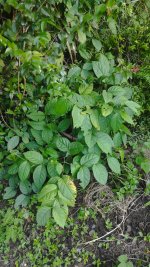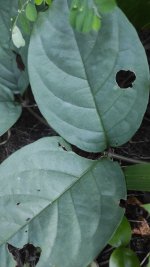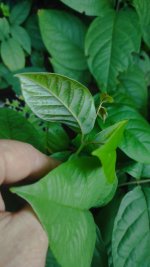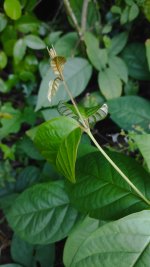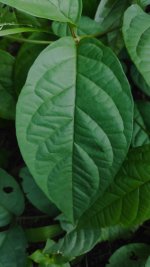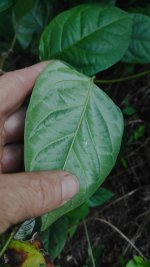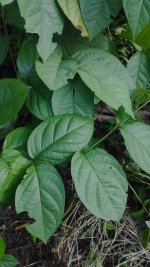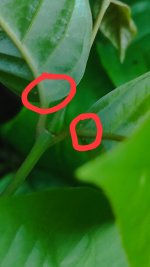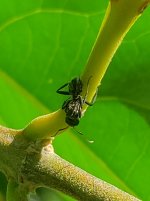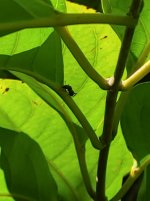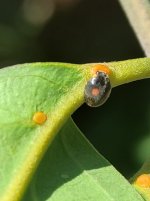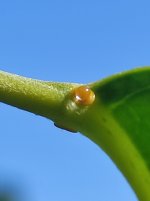I must thank you
@TheAwakening
You opened a Pandora's box for me....
I did notice these little marks on undersides of leaves but never really knew what they were.
After your post I did a little research and have been blown away.
Turns out these little glands are extrafloral nectaries(EFNs)
They secrete a protein rich nectar which attracts mainly ants (and other pollinators)which feed on it.
Here are two very interesting articles on the subject.
ABSTRACT Leaf glands are common structures in Malpighiaceae and exhibit great morphological...

doi.org
ABSTRACT We describe the leaf anatomy of 42 of the 60 species of the genus Banisteriopsis, one...

doi.org
I decided to go into my garden and take a closer look.
I was blown away by how many insect visitors are taking advantage of this secretion.
3-5 different ants
3-5 different bees
3 wasps
And a ladybug...
I couldn't take pictures of all of them because most of them are so quick and it's difficult to get a picture while vine is moving in wind but managed to snap a few.
Simply amazing!!
I havnt yet found much info on Alicia EFNs but will keep looking.
The ones on my plant in the opening post seem much different (smaller) than the ones I was observing all the insect activity on.
This plant is from seed which I got from a very kind member off our sister site and they came labelled as red Caapi(B.muricata)?
Visually two very different plants...
What amazed me even more was reading about the "shultz enigma"

rainforestmedicine.net
Seems like there is way more to learn
Lifetimes ....
I'm only just scratching the surface


